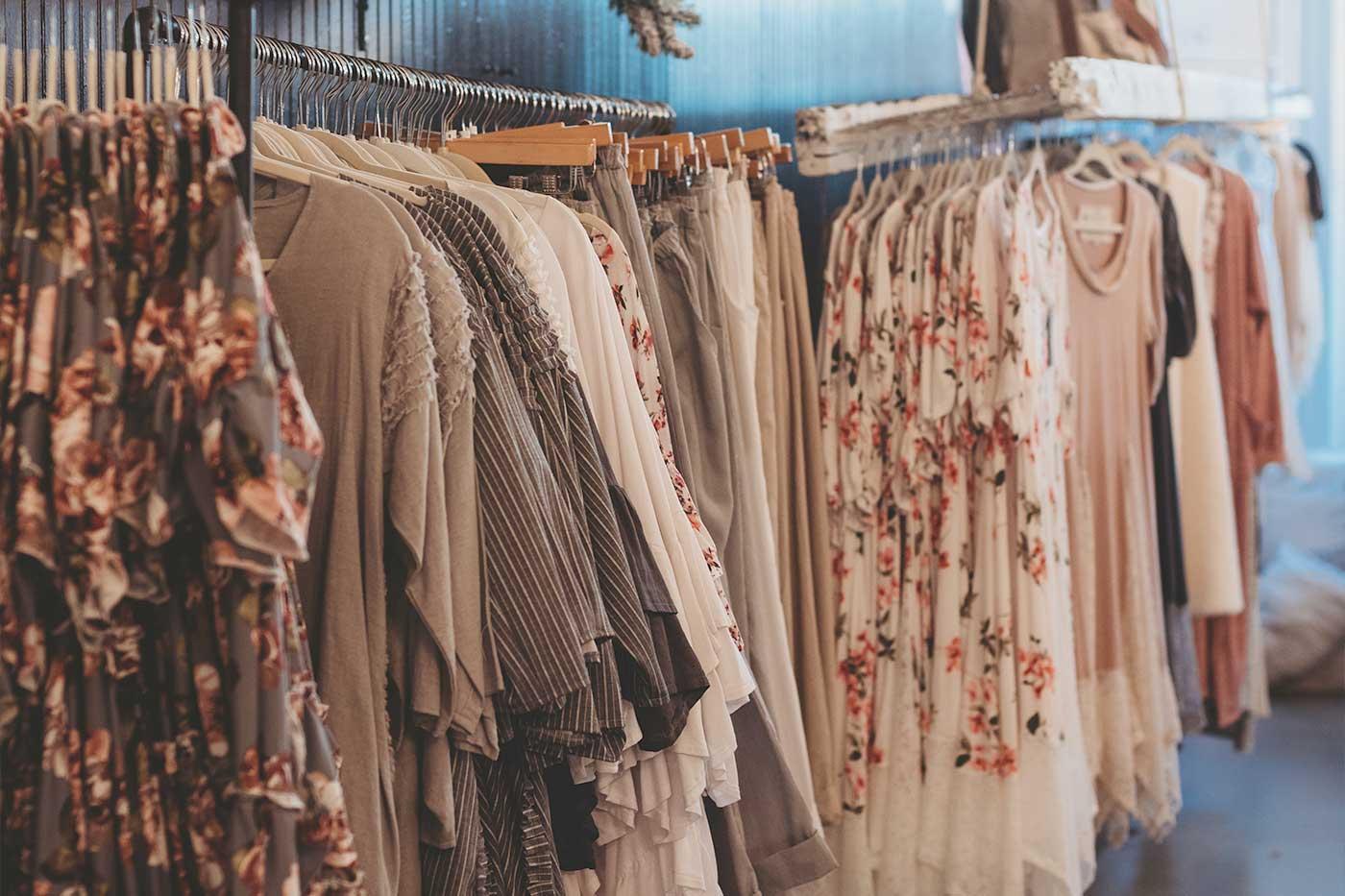Top 10 Essential Pieces from Your Fave Boutique Fashion Shops
Lasting Fashion: Exactly How Eco-Friendly Garments Is Forming the Future of Style
As the fashion market faces raising analysis over its ecological influence, the surge of sustainable fashion provides a promising choice that straightens style with ecological duty. boutique fashion. How does this movement absolutely influence the future trajectory of fashion, and what difficulties lie ahead in its extensive fostering?
Ingenious Lasting Products
As the fashion sector comes to grips with its ecological influence, ingenious sustainable products have arised as an important option for minimizing ecological footprints. Amongst the most appealing products are those stemmed from all-natural, sustainable sources, such as organic cotton, hemp, and bamboo. These products not only decrease dependency on fossil gas but additionally decrease harmful chemical usage and water intake. Organic cotton, as an example, uses dramatically much less water than traditional cotton and eliminates the requirement for toxic chemicals, consequently preserving soil health and wellness and biodiversity.
Along with plant-based materials, advancements in biofabrication have actually caused the development of lab-grown textiles. Mycelium natural leather, originated from mushroom roots, presents a functional and biodegradable option to pet natural leather. Its manufacturing results in substantially lower carbon discharges and water use, making it a more lasting option for stylist looking for to align with environment-friendly techniques.
Recycled products are additionally acquiring grip, with polyester made from recycled plastic bottles representing a significant advancement. This technology not just diverts plastic waste from garbage dumps and seas yet additionally minimizes power intake contrasted to producing virgin polyester. Together, these materials underscore the potential for an extra lasting garment industry, leading the method for ecologically aware style and manufacturing.
Eco-Conscious Production
Structure on the advancements in lasting materials, the fashion market is additionally re-evaluating its production processes to better lower environmental effect. Secret strategies include reducing water usage, reducing carbon exhausts, and removing harmful chemicals.
Another vital facet is the reduction of toxic chemicals generally utilized in dyeing and finishing fabrics. Eco-conscious producers are changing towards plant-based dyes and waterless dyeing modern technologies, which not only guard local ecological communities however also boost worker security. Innovations like electronic printing minimize material waste and power usage, supplying a cleaner choice to typical approaches.
In addition, transparency and traceability have actually become vital. With the innovation of blockchain innovation, business can currently provide detailed understandings right into their supply chains, making certain eco friendly and ethical methods at each action. This transparency builds customer trust fund and urges brands to maintain high sustainability standards. As the need for eco-conscious items grows, suppliers are forced to introduce, making sure that the future of fashion is both lasting and elegant.
The Surge of Upcycling
Upcycling, a transformative technique in sustainable style, includes creatively repurposing discarded materials into brand-new, premium items. This innovative approach not only lowers waste but also decreases the demand for raw materials, therefore minimizing the environmental impact of clothing production. By rebuilding and reimagining existing items, developers and style brand names are able to infuse originality right into their collections while promoting environmental duty.

Additionally, the upcycling motion has actually equipped local business and independent developers, who usually lead in technology as a result of their agility and creativity. By profiting from the abundant availability of unused materials, these entities add to a round economic visit this site situation, showing that fashion can be both lasting and fashionable. Via upcycling, the industry takes substantial strides in the direction of a much more accountable and aware future.
Thrift Culture's Influence
The burgeoning second hand society significantly reshapes the landscape of lasting style, highlighting the value of mindful intake. This cultural change encourages customers to embrace previously owned clothing, thereby decreasing the demand for new garment production and decreasing ecological impact. Second hand shopping not just expands the lifecycle of apparel yet additionally decreases the carbon footprint connected with production, transporting, and throwing away garments.
A key element of second hand culture is its democratization of style. By offering a broad variety of styles from various periods at budget friendly prices, second hand stores make fashion easily accessible to a more comprehensive target market. This access cultivates a feeling of individuality and creative thinking, as consumers mix and match special pieces to curate personalized wardrobes without adding to the fast fashion cycle.
Moreover, thrift society advertises circularity in style, straightening with the concepts of a round economic climate. By recirculating garments, the cycle of waste is interrupted, and resources are saved. This method sustains a change from a linear "take-make-dispose" version to an extra lasting structure. As more customers and designers welcome second hand culture, the garment industry is obliged to adapt, integrating sustainable techniques to meet the expanding need Continue for eco-conscious alternatives.

Future Trends in vogue
Fashion's development is increasingly formed by technological advancements and sustainability-driven campaigns. As customers end up being more environmentally conscious, the sector is responding with groundbreaking innovations that redefine the future of style. One popular pattern is the rise of electronic style, where digital garments can be worn in enhanced reality environments, significantly reducing fabric waste. This shift not just deals with the digital-savvy consumer but additionally reduces the ecological footprint generally connected with garment production.
Furthermore, the assimilation of blockchain modern technology offers new opportunities in openness and traceability, enabling customers to confirm the sustainability qualifications of their clothes. boutique fashion. This guarantees liability in supply chains and advertises moral sourcing techniques. 3D printing is yet one more advancement that assures to transform manufacturing procedures by enabling on-demand manufacturing, thereby minimizing excess stock and waste
In addition, the growth of bio-fabricated materials, such as lab-grown natural leather and plant-based textiles, presents sustainable choices to standard materials. These advancements decrease reliance on pet items and resource-intensive crops. As these technologies mature, they are poised to transform the style landscape, merging design with sustainability. The future of fashion, consequently, exists in a smooth blend of technology, technology, and ecological responsibility.
Verdict
The makeover of the fashion business through lasting techniques shows a crucial change towards ecological liability. The combination of innovative materials, click to read eco-conscious production methods, and the embracement of upcycling and thrift culture emphasizes a dedication to minimizing environmental impacts. As these techniques get momentum, they redefine the sector's narrative by prioritizing lasting and moral choices. This development not only aligns style with eco-friendly sustainability however additionally establishes a precedent for future fads concentrated on responsibility and advancement.
As the style sector faces increasing scrutiny over its environmental effect, the surge of sustainable fashion provides an appealing choice that aligns style with environmental responsibility.As the fashion sector grapples with its ecological impact, cutting-edge lasting products have emerged as a crucial service for decreasing environmental impacts. With each other, these products emphasize the potential for an extra lasting style industry, paving the means for ecologically mindful style and production.
Building on the advancements in sustainable products, the fashion sector is likewise re-evaluating its manufacturing processes to additionally decrease ecological effect. boutique fashion.Upcycling, a transformative technique in sustainable fashion, entails creatively repurposing thrown out materials into brand-new, high-grade products